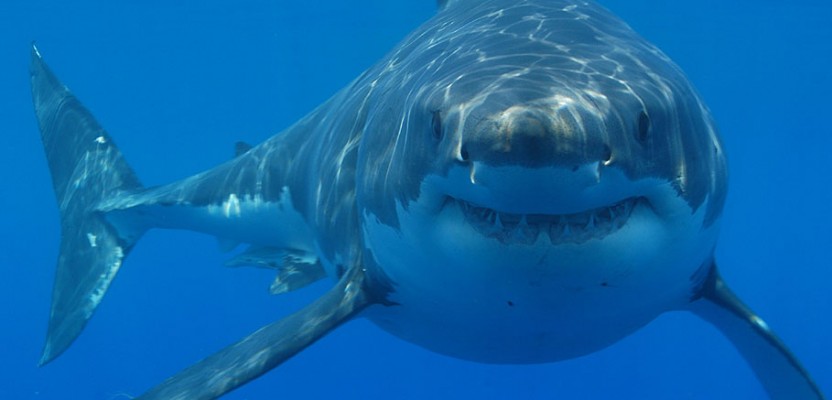With Discovery Channel’s “Shark Week” taking a big bite (sorry couldn’t help it!) out of my 4th of July weekend, my thoughts naturally turned to unmanned systems. Well, actually, thoughts on how unmanned systems are being used to study sharks with an eye to protecting both them and humans.
Let’s start with that last application, protecting humans from sharks. Lifeguards on Surfside and Seal beaches in California have been using a small quadcopter (not identified, but it looks like a DJI Phantom) to detect sharks and protect surfers and swimmers. According to Seal Beach lifeguard chief Joe Bailey, “It flies up about 100 feet, looks down a wide area, and when we see the shadows, we’ll go down and focus in on them.” They have seen five- to six-foot sharks that have been deemed non-aggressive and were just feeding on bottom fish. Larger sharks and/or those that are acting aggressive will trigger a beach closure.
senseFly’s eBee UAS has been recently used to study sharks in the Seychelles atoll in the Indian Ocean off East Africa. As a cooperative effort between Switzerland-based nonprofit group Drone Adventures and the Save Our Seas Foundation, the team flew drones even lower over the surrounding waters, about 160 feet (50 meters) above the waves. The resulting images show a rich abundance of lemon and black tip sharks, sea turtles, and sting rays. Researchers are still examining the images, but early analysis suggests a promising number of young sharks in the lagoon. According to the team at Drone Adventures, “Counting sharks and rays using drone imagery has the advantage of not interfering with the species’ habitat, as is the case in traditional transects and counts done by boat and on foot. This makes counts more correct and precise as each individual shark or ray is only counted once.”
As helpful as unmanned aerial systems are in shark observation and research, they are largely limited to shallow-water areas. For deep-water research on shark migrations, autonomous unmanned surface vehicles (USV) like those made by Liquid Robotics and Saildrone come into play. These platforms are being outfitted with sensors that can pick up signals from acoustically-tagged sharks and beam the data back to mission control. Until now researchers have had to wait about a year for the tags to fall off and be recovered by manned ships whose operating costs run into tens of thousands of dollars per day. The plan is to get this data in real time, even in 3D, at far less cost.
Unmanned platforms, in the sky and on the sea, are providing real benefits to studying sharks and protecting humans from shark aggression. Another win-win for unmanned technology!

